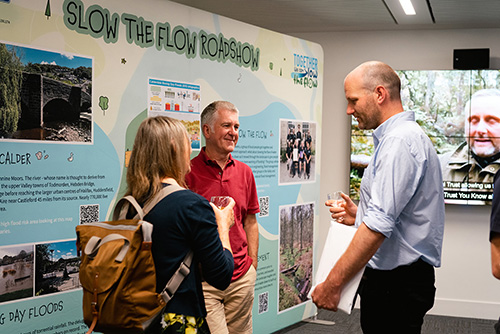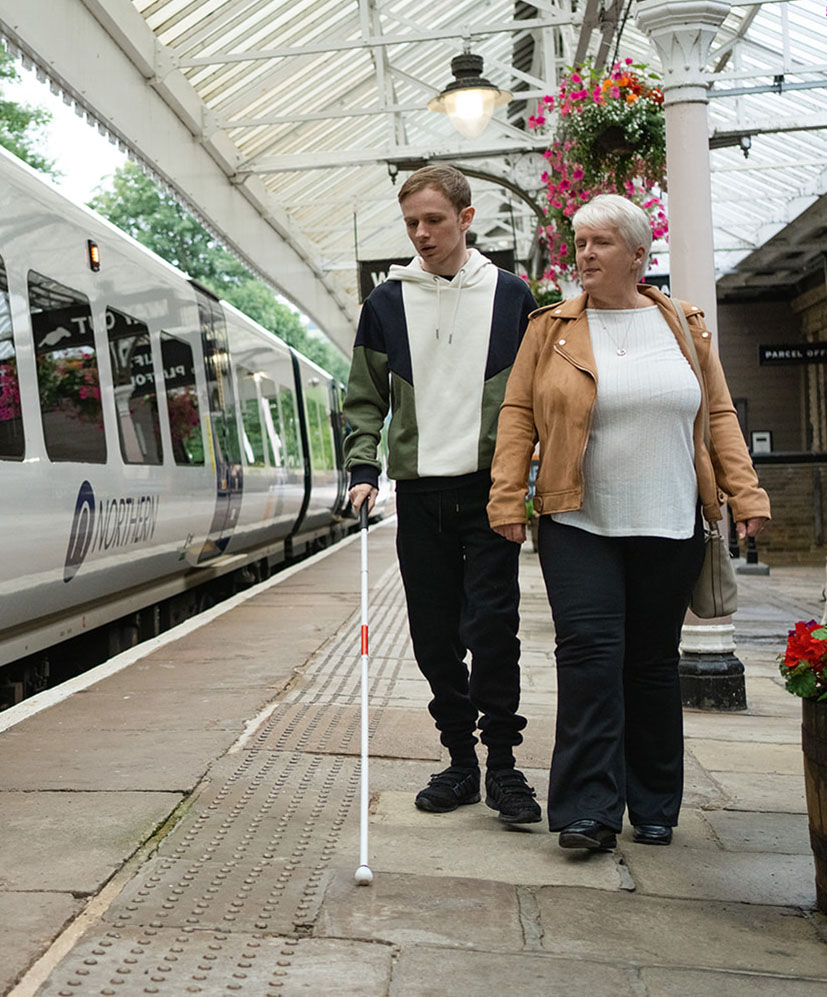The difference we want to make

We declared a climate emergency in January 2019, and are committed to becoming a net- zero carbon place by 2038.
Our communities live with the significant and ongoing fear of flooding, one of the devastating effects of climate change. We want to protect local people and businesses by building resilience to things like extreme weather, and by improving air quality to help people live healthier lives.
We want to restore nature and manage our landscapes sustainably to help wildlife thrive, reduce carbon emissions and flood risk, and help people get out into nature to stay well.
The ambitions within this priority are:
- Nature and landscapes – our landscapes are protected and looked after so they can store carbon and support our wildlife.
- Warm and resilient buildings – every home in the borough needs to be warm and resilient, and all buildings need an Energy Performance Certificate rating of C or above.
- Transport and air quality – our transport systems work for everyone and our streets are safer and greener.
- Green economy – our businesses and residents are future-ready so they can thrive in a net zero carbon world.
Context

In the last decade, flooding in Calderdale has been much more frequent with significant impacts. This is a direct result of climate change and Calderdale is especially vulnerable to flooding because of its steep-sided valleys and riverside communities. Other consequences of climate change are also increasingly impacting on people’s health and our beautiful natural landscapes, such as poor air quality and more frequent and longer periods of extreme heat.
Calderdale’s climate action is a huge team effort across the whole borough, all communities and many organisations. It is nationally recognised as leading the way, winning the ‘Leadership in responding to the climate emergency’ category at the prestigious MJ Local Government Achievement Awards in June 2024.
Producing a Local Area Energy Plan to map our route to net zero, and working on a whole terrace retrofit demonstrator project, are both West Yorkshire firsts.
How we will make a difference
Nature and landscapes
- Continue to work with partner organisations and local communities to reduce flood risk and build flood resilience. We will promote the delivery of natural flood management, including the pioneering sphagnum moss project to restore moorland and peatland to reduce flood risk.
- Help improve water quality in our rivers to benefit people, wildlife and the environment, working with the Environment Agency, Yorkshire Water and other organisations.
Warm and resilient buildings
- Deliver our whole terrace retrofit demonstrator and develop more business cases for investment, to install measures to make homes warmer, healthier and cheaper to heat.
- Lead by example by reducing the Council’s own environmental impact and carbon footprint, with electric vehicles in our fleet, low-carbon public buildings and climate-friendly policies.
Transport and air quality
- Continue to develop polices and plans to make effective and efficient investment decisions in our highway assets to keep them in a safe condition.
- Continue to support bus franchising and the development of mass transit across West Yorkshire. We want to see further improvements to our bus stations and bus stops, ensuring they are comfortable, safe, modern and have real-time displays.
Green economy
- Move our waste and recycling services to a new provider in August 2026.
- Develop a Renewable Energy Planning Policy to support our climate ambitions.
- Work with Calderdale Food Network to develop and publish a Sustainable Food Strategy.
How we will measure success
| Performance Indicator | What is good performance? |
|---|---|
| Local sites (both geological and wildlife) where positive conservation management is being or has been implemented in previous 5 years | High |
| Per capita CO2 emissions in the area | Low |
| Household waste recycling rate (CKPI ID406) | High |
| Residual household waste - (CKPI ID 86) per household | Low |
| Recycling contamination rate | Low |
| Percentage of local authority motorways and A roads that should be considered for maintenance (CSKPI ID 17) | Low |
| Percentage of local authority B and C roads that should be considered for maintenance | Low |
